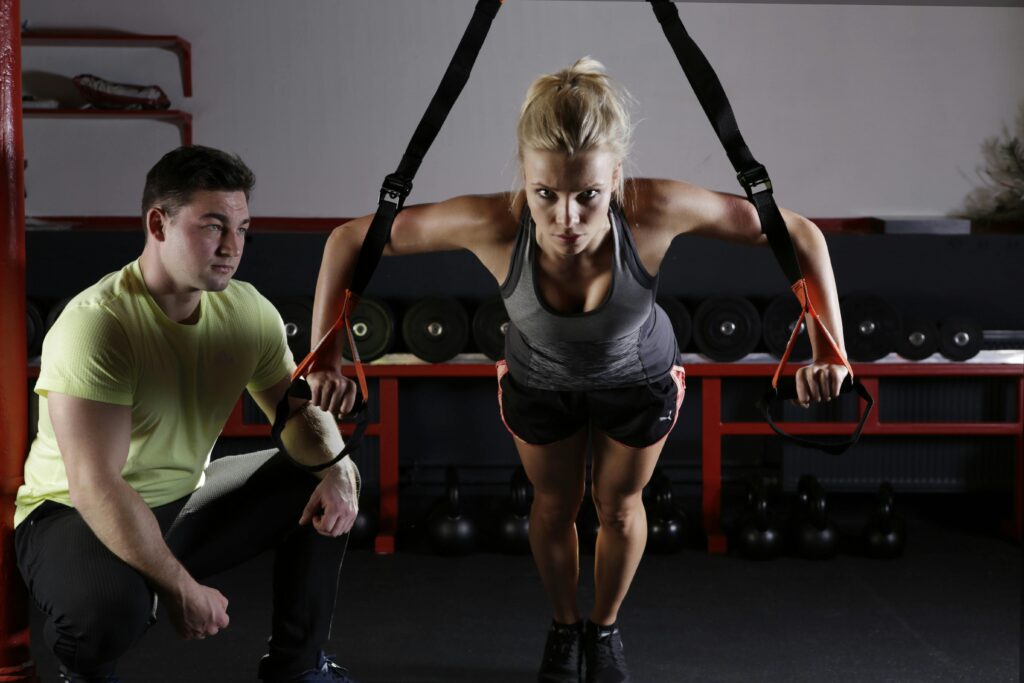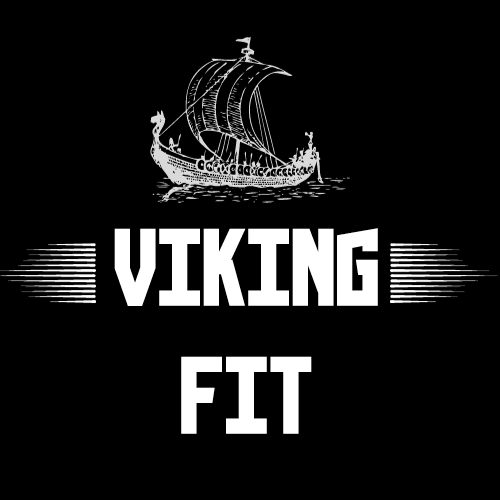Introduction:
In recent years, the fitness world has witnessed a surge in interest surrounding female muscle growth. With more women embracing strength training and bodybuilding, there’s a growing curiosity about the science behind building muscle mass. If you’re among those intrigued by the concept of female muscle growth, you’ve come to the right place. In this comprehensive guide, we’ll delve into the mechanisms, myths, and methods of enhancing muscle growth in women.

Table of Contents
Understanding the Basics of Female Muscle Growth:
Title: Understanding the Basics of Female Muscle Growth: A Comprehensive Guide
Introduction:
When it comes to fitness and strength training, there’s often a misconception that muscle growth is primarily a concern for men. However, the truth is that females can also benefit greatly from resistance training and can achieve impressive muscle growth with the right approach. In this guide, we’ll delve into the basics of female muscle growth, debunk some common myths, and provide practical tips to help women maximize their strength and physique.
Understanding Female Muscle Anatomy:
Before diving into the specifics of muscle growth, it’s essential to understand the basic anatomy of female muscles. Women have the same types of muscle fibers as men, namely, slow-twitch (Type I) fibers and fast-twitch (Type II) fibers. However, the distribution of these fibers may vary slightly between genders.
Slow-twitch fibers are more endurance-oriented and are engaged during activities such as long-distance running or cycling. Fast-twitch fibers, on the other hand, are responsible for explosive movements and are heavily recruited during high-intensity exercises like weightlifting or sprinting.
Myths Surrounding Female Muscle Growth:
One of the most pervasive myths surrounding female muscle growth is the fear of “bulking up.” Many women avoid lifting heavy weights or engaging in resistance training altogether out of concern that they will develop bulky muscles. However, this fear is largely unfounded.
Contrary to popular belief, women have lower levels of testosterone than men, which makes it much more difficult for them to achieve significant muscle hypertrophy. Instead of bulking up, most women will experience a toned and sculpted physique with regular strength training.
Female muscle growth is a topic often surrounded by misconceptions and myths. These myths can prevent women from achieving their fitness goals and embracing strength training to its fullest potential. In this blog post, we will debunk some of the most prevalent myths surrounding female muscle growth and provide evidence-based insights to empower women to pursue their fitness journey confidently.
Myth 1: Women will bulk up excessively from weightlifting. One of the most common myths is that weightlifting will cause women to become bulky and lose their feminine appearance. However, the reality is that women typically lack the testosterone levels necessary to develop bulky muscles like men. Strength training actually helps women achieve a toned and lean physique by increasing muscle definition and metabolic rate.
Myth 2: Cardio is more effective for weight loss than strength training. While cardio exercises are beneficial for burning calories, strength training is equally important for building muscle mass and boosting metabolism. Muscle tissue burns more calories at rest compared to fat tissue, so incorporating strength training into your fitness routine can help you achieve long-term weight loss goals.
Myth 3: Women should only lift light weights for high repetitions. Many women believe that lifting light weights for high repetitions is the best way to tone their muscles without bulking up. However, lifting heavier weights with proper form is essential for stimulating muscle growth and strength gains. Incorporating a variety of rep ranges into your workouts can help you achieve a balanced and effective training program.
Myth 4: Women should avoid protein supplements. Protein is crucial for muscle repair and growth, yet some women fear that consuming protein supplements will make them bulky. In reality, protein supplements can help women meet their daily protein needs and support muscle recovery after workouts. Whey protein, in particular, is a convenient and effective option for women looking to optimize their muscle growth and recovery.
Myth 5: Women over 40 cannot build muscle. Age is not a barrier to muscle growth for women. While it’s true that muscle mass naturally declines with age, women of all ages can still benefit from strength training to maintain and build muscle mass. Incorporating resistance exercises into your routine, along with proper nutrition and recovery, can help women over 40 maintain strength, mobility, and overall health.

Factors Influencing Female Muscle Growth:
Several factors influence muscle growth in females, including:
- Nutrition: Consuming an adequate amount of protein and calories is crucial for muscle repair and growth. Women should aim to include lean protein sources such as chicken, fish, tofu, and legumes in their diet to support muscle development.
- Resistance Training: Engaging in regular strength training workouts that target major muscle groups is essential for stimulating muscle growth. Compound exercises like squats, deadlifts, and bench presses are particularly effective for building muscle mass.
- Hormonal Balance: Hormonal Factors: Testosterone, often associated with muscle growth, is present in smaller quantities in women compared to men. However, other hormones such as estrogen, growth hormone, and insulin-like growth factor (IGF-1) also play crucial roles in muscle development. Estrogen, for instance, contributes to muscle repair and regeneration, while growth hormone and IGF-1 stimulate protein synthesis – a key process in muscle growth Hormones play a significant role in muscle growth, and imbalances can affect progress. Women should focus on optimizing hormone levels through proper sleep, stress management, and a balanced diet.
- Rest and Recovery: Adequate rest is essential for muscle repair and growth. Women should aim for 7-9 hours of quality sleep per night and incorporate rest days into their workout routine to prevent overtraining.

Tips for Maximizing Female Muscle Growth:
To maximize muscle growth, women can follow these tips:
- Lift progressively heavier weights to challenge the muscles and stimulate growth.
- Incorporate a variety of exercises into your workout routine to target different muscle groups.
- Prioritize compound movements over isolation exercises for efficient muscle development.
- Ensure proper form during exercises to prevent injury and maximize muscle engagement.
- Stay consistent with your training and nutrition plan to see long-term results.
Additional Content:
The Importance of Hormones in Female
Muscle Growth: While testosterone is often hailed as the primary hormone driving muscle growth, women’s bodies produce it in much smaller amounts compared to men. Despite this, estrogen, the primary female sex hormone, plays a crucial role in muscle growth and repair. Estrogen aids in the uptake of amino acids, the building blocks of protein, which are essential for muscle repair and growth. Moreover, estrogen promotes the release of growth hormone, which stimulates muscle growth by increasing protein synthesis and reducing protein breakdown.
Nutrition Strategies for Optimal Muscle Growth:
In addition to adequate protein intake, timing and distribution of nutrients play a vital role in supporting muscle growth in women. Consuming a balanced meal containing protein, carbohydrates, and fats within two hours post-workout replenishes glycogen stores, repairs muscle tissue, and promotes recovery. Additionally, including protein-rich snacks throughout the day ensures a steady supply of amino acids for muscle repair and growth. Furthermore, staying hydrated is crucial for optimal muscle function and performance during workouts.
Tailoring Training Programs to Female Physiology:
Designing a training program tailored to female physiology maximizes muscle growth potential while minimizing the risk of injury. Women tend to have greater lower body strength relative to upper body strength compared to men. Therefore, incorporating exercises that target the lower body, such as squats, lunges, and hip thrusts, into training routines capitalizes on this strength advantage. Additionally, variations in training volume, intensity, and frequency accommodate individual differences in muscle response and recovery.
The Role of Genetics in Female Muscle Growth:
Genetics play a significant role in determining an individual’s muscle-building potential. While some women may naturally have a predisposition to gain muscle more easily, others may face greater challenges in achieving significant muscle growth. However, genetics should not be viewed as a limitation but rather as a factor to be considered when setting realistic expectations and goals. With consistent training, proper nutrition, and dedication, women can optimize their genetic potential and achieve meaningful muscle growth.
Psychological Factors and Female Muscle Growth:
The psychological aspect of female muscle growth is often overlooked but can profoundly impact progress and adherence to training programs. Cultivating a positive mindset, setting realistic goals, and celebrating milestones along the way fosters motivation and resilience. Moreover, surrounding oneself with a supportive community of like-minded individuals provides encouragement, accountability, and inspiration throughout the fitness journey. By nurturing mental well-being alongside physical strength, women can overcome challenges and unlock their full potential in muscle growth and overall fitness.

.
Dispelling Myths Surrounding Female Muscle Growth:
One prevalent myth is that lifting weights will make women bulky. In reality, achieving a bulky physique requires a specific combination of genetics, training, nutrition, and possibly performance-enhancing substances. For most women, resistance training leads to sculpted, lean muscle rather than excessive bulk.
Key Factors Influencing Female Muscle Growth: Several factors influence the rate and extent of muscle growth in women. These include:
Hormonal Balance: While women typically have lower levels of testosterone than men, hormones like estrogen and growth hormone also play crucial roles in muscle development.
Nutrition: Adequate protein intake, along with a balanced diet rich in micronutrients, supports muscle repair and growth.
Progressive Overload: Gradually increasing the intensity, volume, or resistance of workouts challenges muscles and stimulates growth.
Rest and Recovery: Muscles need time to recover and repair after strenuous workouts, so adequate rest and quality sleep are essential for optimal growth.Adequate rest and recovery are often overlooked yet crucial aspects of muscle growth. During rest periods, muscles repair and rebuild, leading to enhanced strength and size. Overtraining can impede progress and increase the risk of injury, emphasizing the importance of scheduling rest days and prioritizing quality sleep. Additionally, incorporating techniques like foam rolling and stretching aids in muscle recovery and flexibility
Conclusion:
Female muscle growth is a multifaceted process influenced by various factors, including genetics, hormones, nutrition, and training regimen. By understanding the science behind muscle growth and implementing effective strategies, women can achieve their fitness goals and unlock their full potential. Embrace the journey, stay consistent, and witness the transformative power of strength training in sculpting a stronger, healthier, and more confident you.
With this comprehensive guide, we’ve aimed to provide valuable insights into female muscle growth, dispel common myths, and offer practical tips for achieving optimal results. Whether you’re a seasoned fitness enthusiast or a beginner embarking on your journey, may this resource serve as a roadmap to success in your pursuit of female muscle growth.
Remember, empowerment comes from within, and every rep, every set, brings you closer to becoming the best version of yourself. So, seize the opportunity, embrace the challenge, and let your journey to female muscle growth be a testament to your strength, determination, and unwavering commitment to self-improvement.
Female muscle growth is a dynamic process influenced by a myriad of factors including hormones, nutrition, training, genetics, and psychology. By understanding the intricate interplay of these elements and adopting a holistic approach to fitness, women can unleash their strength, transform their bodies, and achieve their muscle growth goals. Embracing the journey with patience, perseverance, and determination empowers women to redefine their limits, break barriers, and sculpt the strong, resilient, and empowered physique they desire.
we are recommended you Does Swimming Build Muscle ? Full Guide For Beginners





Pingback: Top 10 Signs Of Gaining Muscle In Female : A Comprehensive - Vikingfit22.com
Pingback: The Power Of Active Care Nutrition Beneficial Guidance To Achieve Your Goal 2024 - Vikingfit22.com
Pingback: Mastering Female Muscle Anatomy: Key Insights For Optimal Fitness And Performance Full Guide - Vikingfit22.com
Pingback: Can Women Build Muscle As Effectively As Men? - Vikingfit22.com